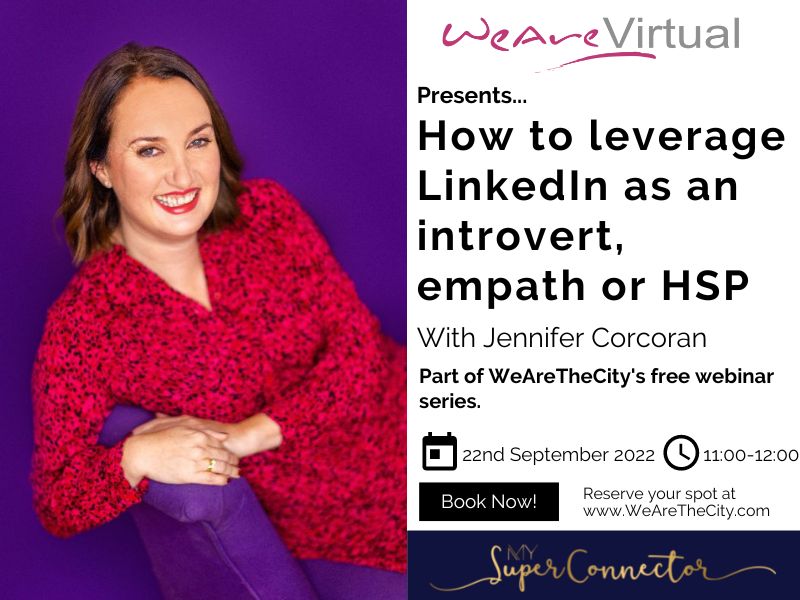 Introverts often get a bad rap…and yet, can you imagine a world where everyone was an extrovert? There is a common misperception that introverts need to become more extroverted.
Introverts often get a bad rap…and yet, can you imagine a world where everyone was an extrovert? There is a common misperception that introverts need to become more extroverted.
It’s important to understand that there is nothing wrong with being an introvert. Variety is the spice of life and the strongest teams generally have a mix of people with different styles and strengths that balance each other.
The truth is that most of us sit somewhere on the introversion/extroversion spectrum rather than being 100% one or the other.
That applies whether we’re using the Oxford English Dictionary or the Myers Briggs (MBTI)* definition of introvert:
- OED: a shy, reticent person; a person characterized by concern primarily with his or her own thoughts and feelings
- Myers Briggs: Introverts like getting their energy from dealing with the ideas, pictures, memories, and reactions that are inside their head, in their inner world. They often prefer doing things alone or with one or two people they feel comfortable with. They take time to reflect so that they have a clear idea of what they’ll be doing when they decide to act.
*The Myers-Briggs Type Indicator is a personality self-assessment that helps you understand how you’re energized (extraversion or introversion), the way you take in information (sensing or intuition), what things you weigh when you make decision (thinking or feeling), and how you organize your time and world (judging or perceiving).
Rather than trying to turn introverts into extroverts, a more effective strategy is to hire them for roles, and assign them to projects that leverage their strengths and interests – and to create a work environment where they can thrive. For example, most introverts prefer working solo, communicating in writing, having plenty of time for reflection and recovery, especially after intense interpersonal communication to rebalance cortisol (stress), oxytocin (belonging) and dopamine (pleasure) levels, having a degree of autonomy, and a clearly defined role and objectives. Reduce surprises and give them sufficient preparation time so that they can maintain the right levels of acetylcholine (balance), adrenalin (fear/excitement), and cortisol – essential for stress management and healthy energy levels. Create agendas before meetings. Let introverts consider and plan their contribution to the meeting in advance. Schedule breaks between meetings; back to back meetings are especially unrewarding and demotivating for introverts, draining energy and engagement. Don’t overlook the introvert when considering whom to promote – although traditionally not strong self-promoters, research indicates that introverts are often successful managers because they carefully assess competencies and delegate very effectively.
If you manage introverts, encourage them to challenge themselves to occasionally move beyond their comfort zone. Even when in the right role, there are situations where people who are naturally introverted have to engage in more extroverted activities. In those instances, coaching or training can help. For example, women, in particular, have been profiled as being generally less assertive than men and when they do assert themselves or speak up, have been described as aggressive or strident. We coached “Marion,” as part of a fashion industry team. She is an introvert and very qualified for her role, but was struggling to find her voice. On the first day of training, during the lunch break, when placing orders, it took Marion three attempts before the waiter heard her clearly. She said, ‘That often happens. I always have to repeat myself.’ We suspected that Marion needed more breath support and forward placement of her voice. When we returned to the training session, Marion found that when she breathed in diaphragmatically, then directed her out-breath and her words towards their destination (the waiter’s ears) she could be heard. The issue wasn’t volume, it was projection. The following day at lunch, the waiter heard her request first time round. We gave Marion a daily assignment – after cleaning her teeth each morning, she was to stand back from the bathroom mirror and say to her reflection ten times: ‘My words come forwards out of my mouth’ (breathing diaphragmatically between each repetition). She did this every day for three months, to strengthen her vocal support muscles. She was also conscious of projecting her voice at other times, and it soon became second nature.
Women are not predisposed to being comfortable with conflict; (neither are men but evidence suggests it is particularly true of women), whether it’s a difficult conversation at work or conflicts at home. This is exacerbated for introverts who prefer to avoid overly emotional verbal exchanges. As a result, they may back away from objections rather that trying to resolve them. For example, while training the R&D team of a leading global FMCG corporation (where the business is built on research and the R&D team is crucial), we met a woman who is a brilliant scientist and had conducted impressive research, but was introverted by nature and uncomfortable speaking about and defending her work. As a result, her ability to influence organisational strategy was compromised. She needed to enhance her ability to communicate the business value of the work she was doing.
We shared a framework for effective technical communication and physical intelligence techniques to enhance strength, flexibility, resilience and endurance, including:
- Posture, breathing, and vocal techniques to manage stress levels, emphasising powerful communication
- Flexibility techniques to foster creative thinking and deliver messages in a more engaging way
- Techniques for commanding a space and establishing authority in a way that includes everyone and makes people feel valued and heard
- Resources to build resilience, including a breathing technique that helps when you’re feeling panicked, overwhelmed or dealing with burnout
Within weeks, she had been promoted, her research was highly praised, and she was asked to lead a key strategic initiative.
The moral of the story is that with the right support and training, introverts can communicate more assertively and with confidence, while remaining true to themselves, and by doing so their value can be more broadly communicated across the business. Embrace and celebrate your introverts (and all diversity across your team), encourage the entire team to do the same, and you’ll be better positioned to adapt and thrive in today’s every changing business environment.
 About the authors
About the authors
Claire Dale and Patricia Peyton are the authors of Physical Intelligence (Simon & Schuster) and Directors of Companies in Motion.








